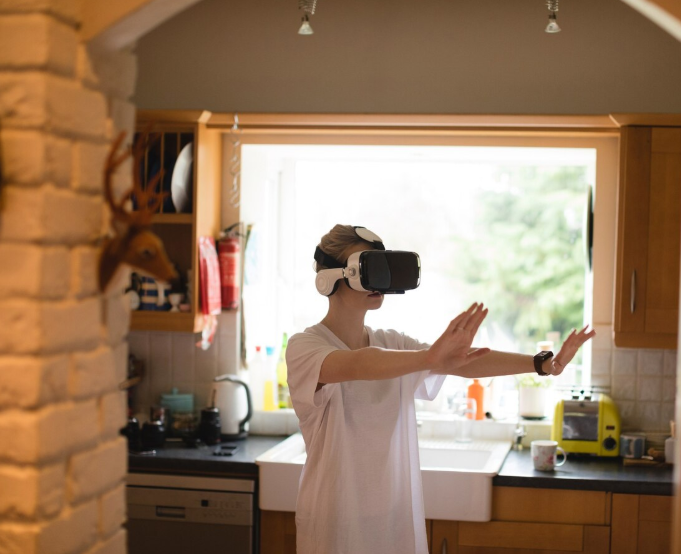How Tech is Reviving Lost Languages and Ancient Cultures
In an increasingly globalized world, many languages and cultures are at risk of being lost forever. According to UNESCO, one language dies every two weeks, with thousands more on the brink of extinction. But technology is playing an unexpected role in preserving and revitalizing these endangered languages and cultural practices. Through innovations in AI, digital archives, virtual reality, and community-driven projects, the power of modern technology is being harnessed to safeguard humanity’s cultural heritage and revitalize ancient traditions.
In this article, we’ll explore the various ways technology is helping to revive lost languages and cultures, ensuring that future generations have access to the stories, knowledge, and identities of their ancestors.
1. AI and Machine Learning: Reviving Lost Languages
AI and machine learning have become powerful tools in the fight against linguistic extinction. With vast datasets, AI can analyze patterns in language and help reconstruct or translate texts that were previously incomprehensible.
Language Models for Translation
Some AI programs can now translate or assist in understanding and reviving long-lost languages. For example, tools like Google Translate, powered by neural machine translation, can help create more accurate translations, even for languages that have limited data. By analyzing texts, sounds, and symbols, AI models can learn the intricacies of a language, allowing scholars to interpret ancient scripts.
Speech Recognition and Generation
AI-driven speech recognition software has been used to help record and preserve spoken versions of endangered languages. One of the most notable examples is the Project Ekalavya by the Indian Institute of Technology, which uses AI to help digitally archive and teach rare languages. These systems can convert oral traditions into written form, making it easier for future generations to learn and maintain these languages.
Reviving Ancient Scripts
Machine learning is also being used to decipher ancient languages like Sumerian, ancient Egyptian hieroglyphs, and Mayan glyphs. Algorithms can analyze ancient texts, cross-reference them with known symbols, and identify linguistic patterns that humans might miss. This digital approach has already led to breakthroughs in translating some of the most cryptic and long-lost scripts.
2. Digital Archives: Storing and Sharing Knowledge
As technology advances, digital archives are becoming essential for the preservation of ancient texts, artifacts, and oral histories. The creation of these online repositories allows for easy access and sharing of cultural materials that might otherwise be lost to time.
Virtual Libraries and Archives
Organizations like the Endangered Languages Project and the World Digital Library are working to build comprehensive online databases of rare or endangered languages. These digital archives include text, audio, and even video materials, allowing researchers, linguists, and language learners to access them from anywhere in the world.
Preserving Oral Traditions
Many indigenous languages rely on oral traditions rather than written texts. Platforms like StoryCorps and The Listening Project record and digitize oral histories, preserving cultural narratives, myths, and traditions. These resources are then shared widely, allowing younger generations to reconnect with their heritage and enabling the preservation of cultural knowledge.
Crowdsourcing Language Data
Crowdsourced platforms, like Global WordNet or Wikitongues, allow people from around the world to contribute data about their native languages. This collaborative effort helps expand digital archives by incorporating the voices and stories of community members. In some cases, these platforms also provide educational tools to help teach endangered languages.
3. Virtual Reality: Reconnecting with Ancient Cultures
Virtual Reality (VR) is providing immersive ways to experience and reconnect with ancient cultures. Whether it’s exploring the ruins of ancient cities or walking through a reconstructed historical site, VR technology allows individuals to experience history in a way that textbooks or traditional media cannot.
Reconstructing Ancient Sites
Virtual reality has become a vital tool in archaeological research. Using VR, scholars can digitally reconstruct ancient sites and civilizations that no longer exist, such as ancient Mesopotamia, Egypt, or the lost cities of the Americas. By recreating the environments in detail, VR lets users “step into” the past, offering a powerful and immersive experience.
For example, the CyArk project has digitally preserved and reconstructed several UNESCO World Heritage sites, such as the ancient city of Petra in Jordan and the Egyptian pyramids, using 3D modeling and VR. These reconstructions are not only valuable for tourists and education but also serve as a safeguard against the destruction of these sites due to natural disasters or human activity.
Cultural Immersion through VR
VR also facilitates cultural immersion, allowing users to participate in traditional ceremonies, rituals, or festivals from the safety of their own homes. Projects like The Virtual Reality and Indigenous Studies Initiative have created VR experiences to let users experience indigenous life and practices, fostering deeper understanding and respect for diverse cultures.
4. Blockchain: Protecting Cultural Artifacts
Blockchain technology, known for its role in cryptocurrency, is also being applied to cultural preservation. By creating immutable, decentralized digital records of cultural artifacts, blockchain can help ensure the authenticity and integrity of cultural assets, preventing theft or fraud.
Digital Ownership and Provenance
One area where blockchain is being utilized is in the art and artifact world. By tagging cultural artifacts with blockchain-backed certificates, museums and cultural institutions can guarantee the authenticity of items and prevent looting or illegal trade of artifacts. This has been particularly important for protecting indigenous cultural materials, which have often been stolen or sold without consent.
Protecting Intellectual Property
Blockchain can also protect the intellectual property rights of indigenous people, ensuring that traditional knowledge or cultural practices are not misappropriated. Through digital “smart contracts,” indigenous communities can set terms for how their cultural knowledge is shared or commercialized.
5. Community-Driven Projects: Empowering Local Communities
While technology plays a significant role in preserving and reviving lost languages and cultures, the true power often lies with the communities themselves. Many of the most successful preservation efforts are driven by local and indigenous groups who use technology to connect with the broader world while maintaining control over their cultural heritage.
Language Apps and Tools
Apps like Duolingo and Memrise have begun offering courses in endangered languages, created in partnership with native speakers and cultural experts. These apps allow people to learn a language that may otherwise be dying, ensuring that the knowledge is passed on to future generations.
Crowdsourced Cultural Preservation
Platforms like Heritage Crowd enable communities to fund the preservation of their cultural heritage. Local projects, such as restoring historic landmarks or archiving folk music, are supported by global donors, ensuring that small-scale efforts can have a large impact.
Virtual Communities for Language Revitalization
Social media and online platforms have made it easier for people to connect with others who speak their native language. For example, language revitalization programs, such as the Māori Language Commission in New Zealand, have used social media campaigns and online video lessons to raise awareness and foster engagement with younger generations.
Conclusion
Technology is becoming an increasingly powerful ally in the battle to preserve and revitalize lost languages and cultures. By combining digital archives, AI, VR, blockchain, and community efforts, technology provides a new way to safeguard humanity’s cultural heritage. The rise of these digital tools offers hope that endangered languages and cultural traditions will not be lost to history but will instead be preserved for future generations to learn from, celebrate, and continue.
As technology continues to evolve, its role in cultural preservation will likely grow even more significant, creating a more inclusive, accessible, and dynamic way for us to explore, respect, and protect the world’s diverse cultural legacies.







